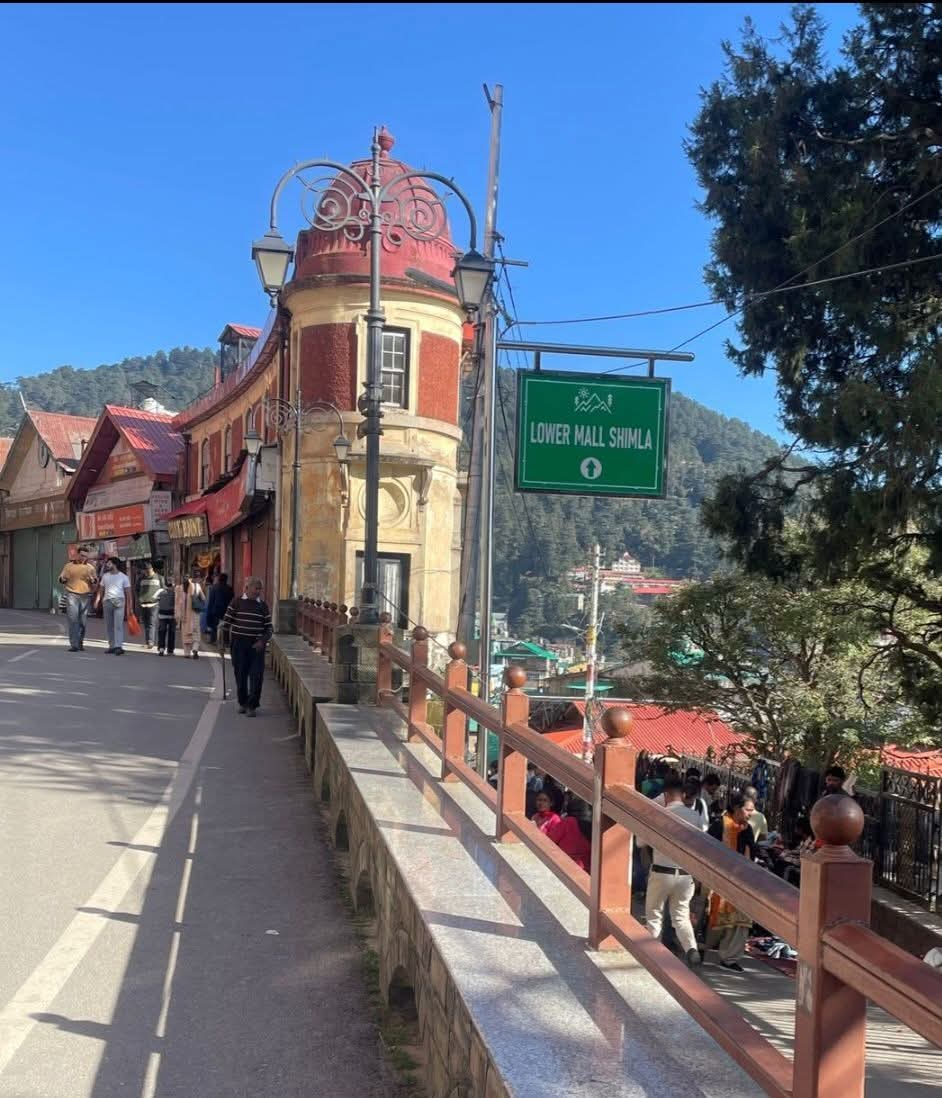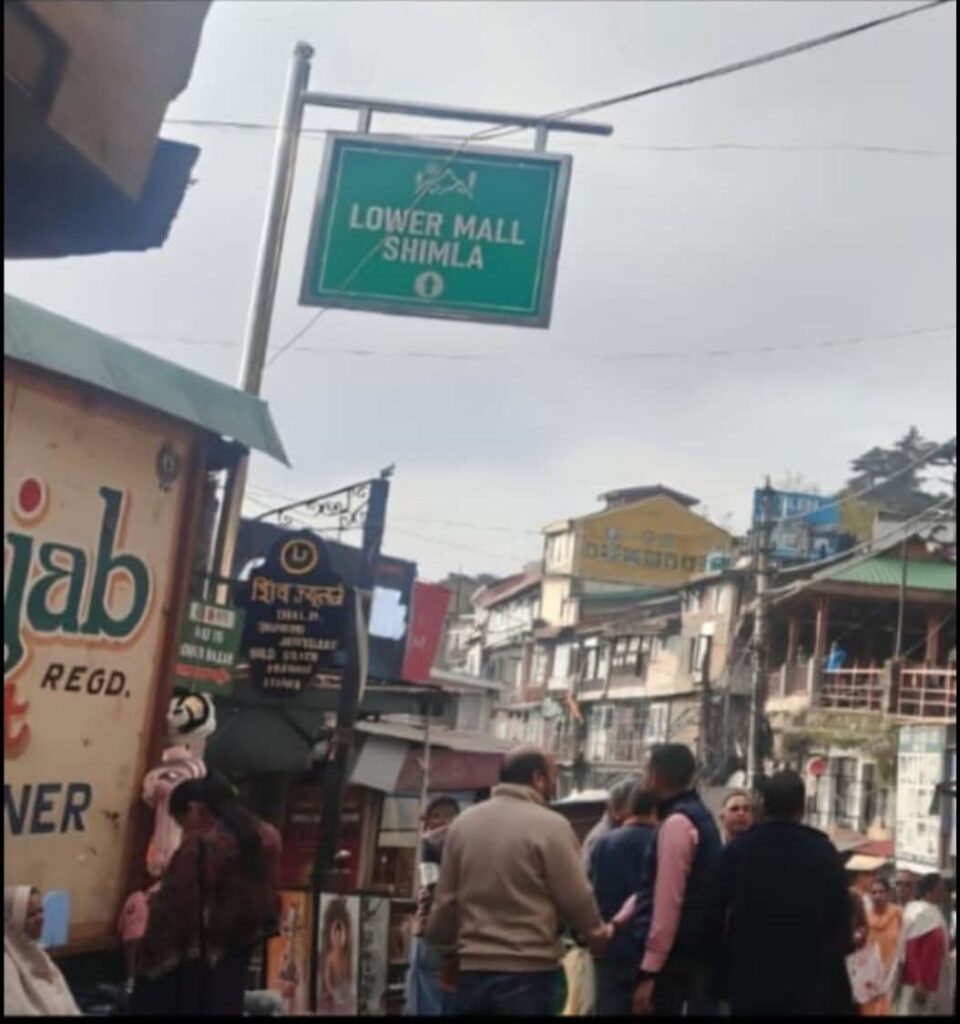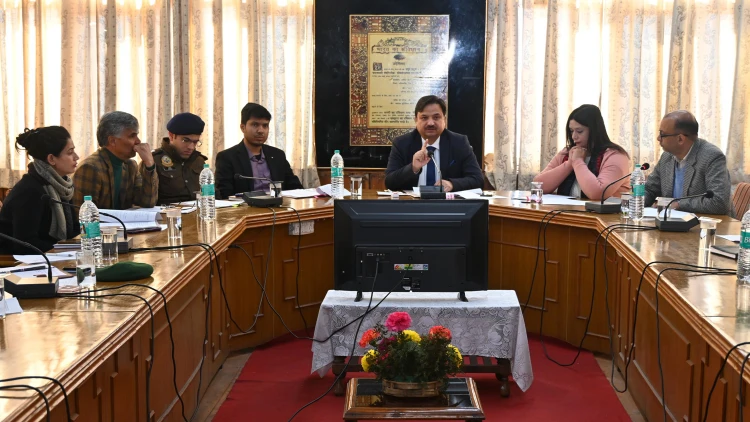Editorial: ‘Lower Mall’ — When Shimla’s History Is Handled by Historically Challenged
3 min read
In a bizarre twist of irony, the modern-day guardians of Shimla’s Civic Souls have decided to ‘upgrade’ history by calling ‘Lower Bazaar’ as ‘Lower Mall’— effectively undoing the very spirit of resistance that birthed the Bazaar. One could almost hear the ghosts of old British officers chuckling: “How efficiently the natives mimic their masters!”
By Ritanjali Hastir, Shimla, Oct 22
 The saying, ‘A little knowledge is a dangerous thing’ seems to hold frighteningly true when it comes to the Shimla Administration. Recently, the town witnessed yet another example of creative cluelessness when a signboard declaring ‘Lower Mall’ appeared where generations have known and loved ‘Lower Bazaar’. The move instantly drew public ridicule online—and rightly so.
The saying, ‘A little knowledge is a dangerous thing’ seems to hold frighteningly true when it comes to the Shimla Administration. Recently, the town witnessed yet another example of creative cluelessness when a signboard declaring ‘Lower Mall’ appeared where generations have known and loved ‘Lower Bazaar’. The move instantly drew public ridicule online—and rightly so.
This isn’t just a casual renaming; it is an unwise blunder dressed as beautification. Lower Bazaar wasn’t born out of some Colonial urban plan but from exclusion. What might have been an unpremeditated bureaucratic decision now reeks of historical ignorance. The irony is that Lower Bazaar owes its very existence to the discriminatory Colonial policies of the British—those who built Shimla’s famed Mall Road as a promenade strictly for the ‘sahibs’ and ‘memsahibs’, barring Indians from even setting foot there. Out of this exclusion grew the Lower Bazaar, a space where the locals built their livelihoods when they were literally kept off ‘The Mall’. It became the beating heart of native Shimla, where commerce thrived, and identity found its space amidst segregation.
To call it ‘Lower Mall’ is not just an error—it’s a distortion of history. It is like naming a scar after the sword that caused it. It erases the story of social segregation and resilience that defines Shimla’s heritage. The Lower Bazaar stands as a reminder of class and racial boundaries that once divided this hill town—boundaries the city overcame with time, not by rewriting them, but by acknowledging them.
The Mall Road was a 19th-century Colonial promenade—built for leisurely strolls, gossip and power dinners. Its name came from The Mall in London, symbolising class, exclusivity and empire. To confuse Lower Bazaar with Mall Road is not modernisation; it’s municipal amnesia. In their eagerness to sound fancy, the officials have managed to insult both—the colonizers’ memory and the colonised’s struggle.
Perhaps next, the city will rename Lakkar Bazaar as ‘Woodland Street’, The Ridge as ‘Skywalk Avenue’, and Dhalli as ‘Hillview Plaza’. Because nothing says heritage like erasing it under a coat of English gloss. Shimla’s charm lies not in its ‘Streets’ but in its memories. The moment we start altering names without understanding their roots, we start erasing stories of who we are and how we came to be.
Before we end up with a city of linguistic makeovers and no historical meaning, maybe someone in the Municipal Corporation should pick up a history book—or better, just take a walk down the real Lower Bazaar. The spirit of Shimla still lives there, no matter how many signboards try to rewrite it. Perhaps it’s time the City’s leadership remembered a simple truth: You cannot preserve heritage by erasing history. And before renaming streets and markets, the administration might consider a quick history lesson—preferably one that doesn’t come from a trending hashtag.
Shimla doesn’t need linguistic makeovers; it needs administrative brains. This isn’t heritage preservation—it’s heritage vandalism with a polite accent. Our City’s story deserves respect, not reinvention by people who apparently skipped their history lessons and mistook Instagram trends for governance.






